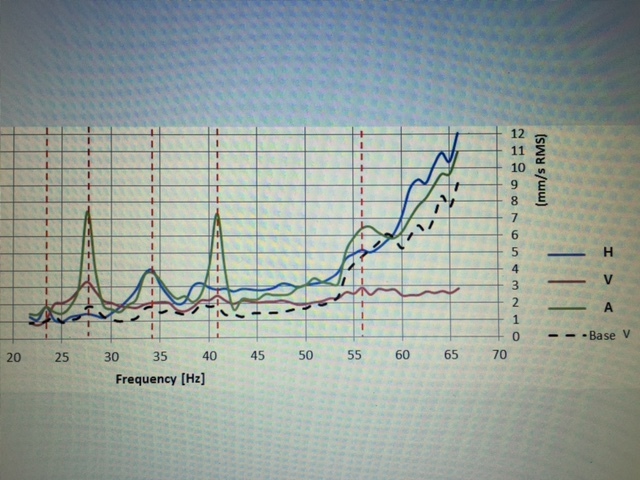indoldrums
Mechanical
Hello all,
We are trying to troubleshoot a vibration issue with our motor-compressor drivetrain. The issue is that when we run a coast-down from 3600rpm down to the min speed, we get high amplitdue vertical vibrations (7mm/s RMS) at about 1500rpm and 2400rpm. Horizontal and axial vibration levels at these modes are low, less than 4mm/s RMS.
Does anyone have any ides why we may be seeing high amplitudes in one direction only, and what could we do to lower the vertical amplitude down? Thank you!
We are trying to troubleshoot a vibration issue with our motor-compressor drivetrain. The issue is that when we run a coast-down from 3600rpm down to the min speed, we get high amplitdue vertical vibrations (7mm/s RMS) at about 1500rpm and 2400rpm. Horizontal and axial vibration levels at these modes are low, less than 4mm/s RMS.
Does anyone have any ides why we may be seeing high amplitudes in one direction only, and what could we do to lower the vertical amplitude down? Thank you!

